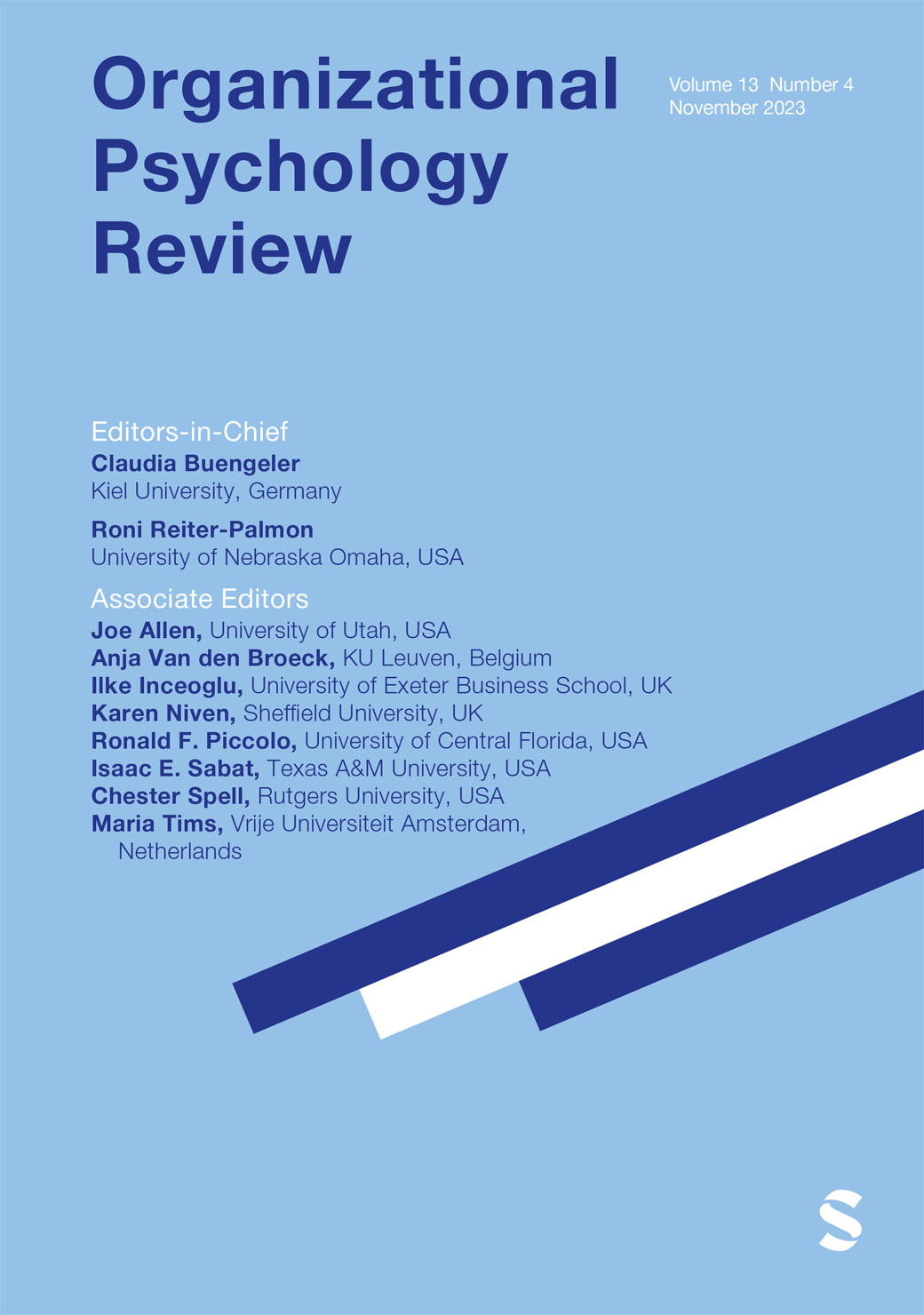How is safety climate formed? A meta-analysis of the antecedents of safety climate
IF 7.1
1区 心理学
Q2 MANAGEMENT
引用次数: 18
Abstract
The purpose of this meta-analysis was to provide a comprehensive quantitative review of research to date on the antecedents of psychological and organizational safety climate. Building upon and expanding Zohar’s conceptual model, antecedents were organized into three broad categories: situational factors, interpersonal interactions, and personal factors. Data were gleaned from 136 primary studies to calculate effect sizes for 38 antecedents and the relative importance of each antecedent within the three categories. Antecedent effect sizes were generally homologous for psychological and organizational safety climate, with the strongest effect sizes for interpersonal interactions followed by organizational climate and leadership. The magnitude of the safety climate antecedent effect sizes tended to be stronger in health-care industry studies and varied inconsistently as a function of the industry-specific nature of the safety climate measure. This meta-analysis provides a much needed summary of the research to date in an effort to guide future research and practice on the development and improvement of safety climate in organizations.安全氛围是如何形成的?安全氛围影响因素的荟萃分析
这项荟萃分析的目的是对迄今为止关于心理和组织安全氛围前因的研究进行全面的定量综述。在Zohar概念模型的基础上,前因被组织为三大类:情境因素、人际互动和个人因素。从136项主要研究中收集数据,计算38个前因的影响大小以及三个类别中每个前因的相对重要性。心理和组织安全氛围的事前效应大小通常是一致的,人际互动的效应大小最强,其次是组织氛围和领导力。在医疗保健行业研究中,安全气候先行效应的大小往往更大,并且作为安全气候措施的行业特定性质的函数,其变化不一致。该荟萃分析对迄今为止的研究进行了急需的总结,以指导未来在组织中发展和改善安全环境的研究和实践。
本文章由计算机程序翻译,如有差异,请以英文原文为准。
求助全文
约1分钟内获得全文
求助全文
来源期刊

Organizational Psychology Review
Multiple-
CiteScore
10.00
自引率
1.60%
发文量
25
期刊介绍:
Organizational Psychology Review is a quarterly, peer-reviewed scholarly journal published by SAGE in partnership with the European Association of Work and Organizational Psychology. Organizational Psychology Review’s unique aim is to publish original conceptual work and meta-analyses in the field of organizational psychology (broadly defined to include applied psychology, industrial psychology, occupational psychology, organizational behavior, personnel psychology, and work psychology).Articles accepted for publication in Organizational Psychology Review will have the potential to have a major impact on research and practice in organizational psychology. They will offer analyses worth citing, worth following up on in primary research, and worth considering as a basis for applied managerial practice. As such, these should be contributions that move beyond straight forward reviews of the existing literature by developing new theory and insights. At the same time, however, they should be well-grounded in the state of the art and the empirical knowledge base, providing a good mix of a firm empirical and theoretical basis and exciting new ideas.
 求助内容:
求助内容: 应助结果提醒方式:
应助结果提醒方式:


